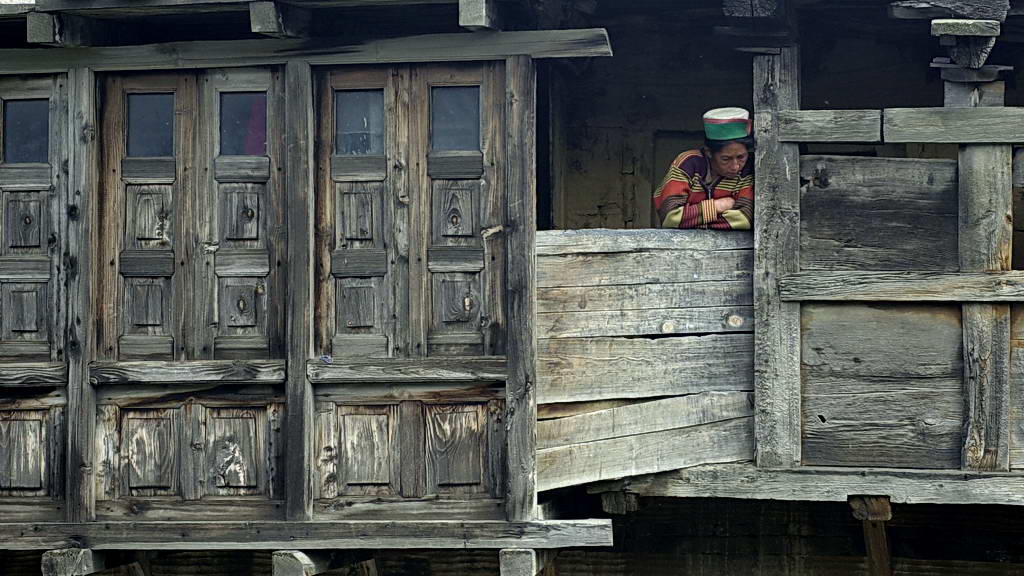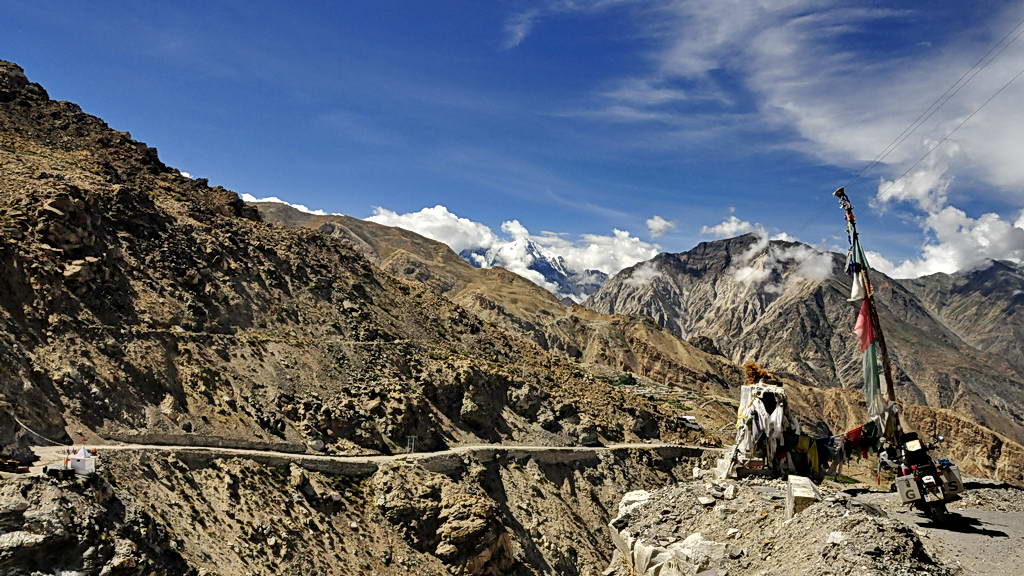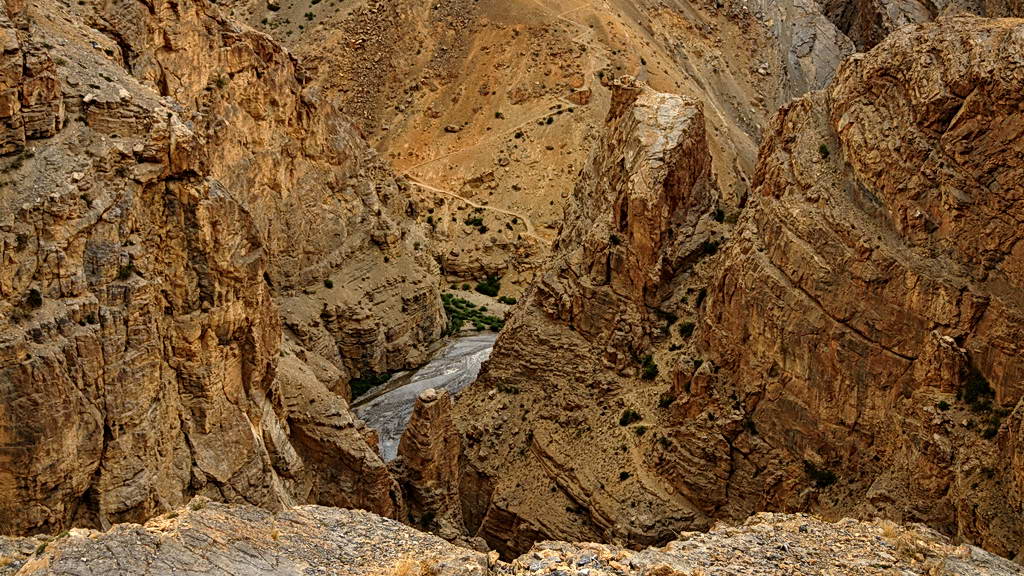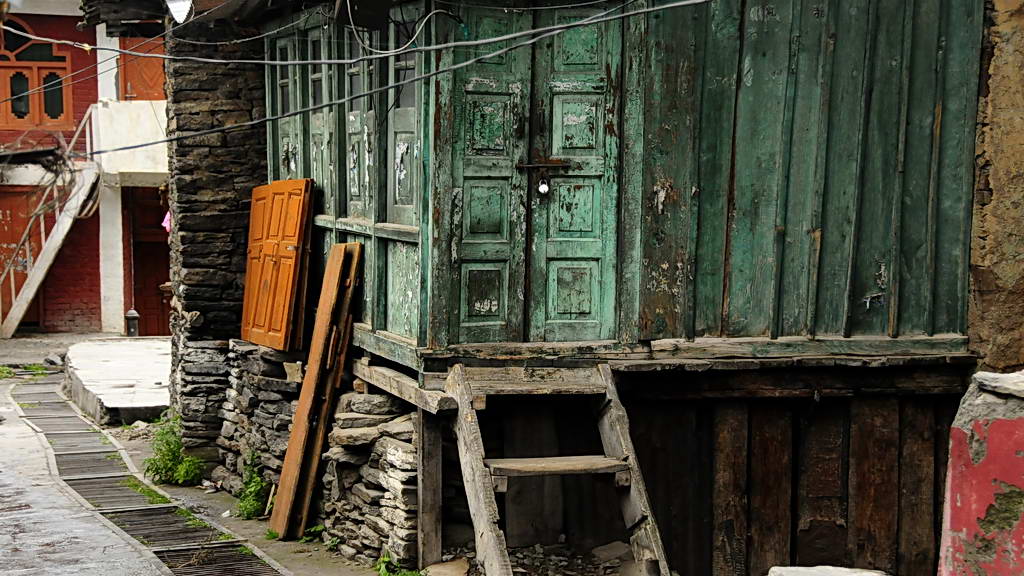Spiti-Ladakh-Cruise
The best of three of our Himalayan tours
We have been traveling with our groups to the heights of the Himalayas every summer for 20 years. You can't get any higher in this world. And not spectacular either. Words cannot describe the grandiosity of these mountains and even the best photos cannot convey what awaits the visitor.
The diversity of the different regions is beyond the imagination of anyone who has not seen it with their own eyes, who has not felt the heat of the day and the cold of the night on their skin, who has not found it difficult to breathe beyond the 3,500 meters mark, who didn't feel happy when he was 5,300 meters above sea level on the roof of the world looking down into the valley far below him and sipping a sugar-sweet tea on Kardung-La in the world's highest tea shop..
You can find all this on our new Spiti-Ladakh-Cruise. You fly to Delhi, the capital of India. First you take a taxi or minibus to Chandigarh, where the bikes are waiting for you. From here we set out for the Spiti Valley, one of the most remote and pristine regions of the Indian Himalayas. Then we follow the Manali-Leh Highway to Leh, the capital of the former Kingdom of Ladakh. On the way we overcome four passes, all around 5,000 meters above sea level. Spend the last week in Ladakh, drive west to Kargil, north across the Kardung-La to the Nubra Valley, the Valley of Flowers, and east to Pangong Lake, through which the border to China runs. Here we spend the highest night of our trip in a stationary tented camp at 4,200 meters above sea level. Back in Leh, we board the plane to Delhi, enjoy dinner together, and then we return home.
I guarantee you this will be one of the greatest journeys of your life and the fond memory of it will stay with you for the rest of your life.
Routing
1. Day: Getting there
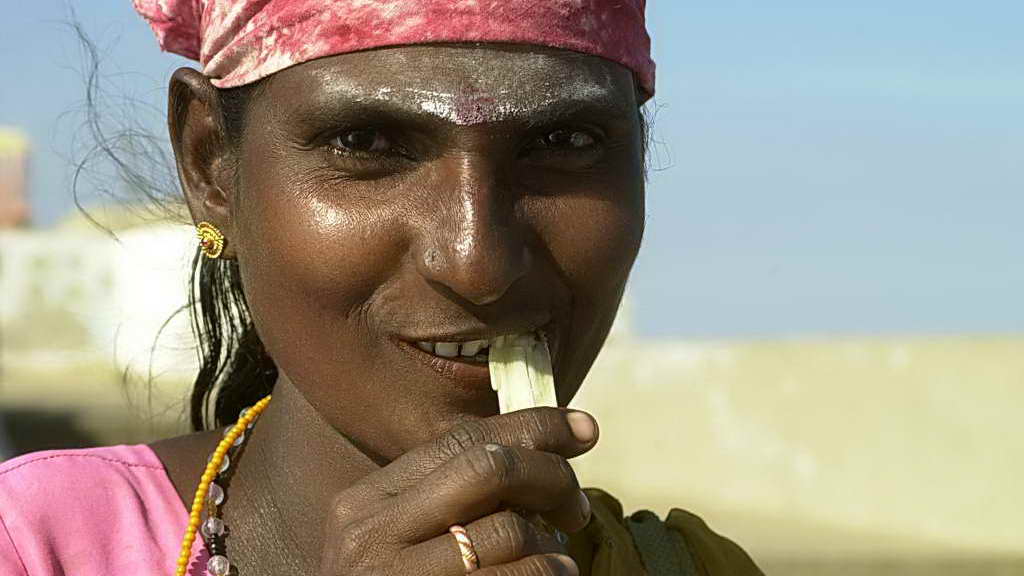
It's time. The time of waiting and anticipation is over. All preparations are done. The adventure can begin. With the plane you start in direction east.
Have a safe flight
2. Day: Transfer to Chandigarh

You spent the first, albeit short, night in India. After breakfast we leave for Chandigarh. After about eight hours by taxi or minibus we reach our destination. Our Royal Enfield Classic or Himalayan are waiting for you here.
One more sleep and off we go.
3. Day: From Chandigarh to Shimla / ca. 135 km

We mount our motorcycles for the first time. After just a few kilometers we leave the valley and we quickly climb up.
Welcome to the foothills of the Himalayas.
Shimla is an old "hill station". The British and Indians moved here in the summer when it was unbearably hot in Delhi. All government was shifted to Shimla. Even today, many buildings are reminiscent of the time of British colonial rule.
.4. Day: From Shimla to Sarahan / ca. 170 km

Now it's getting serious. We're heading towards the Spiti valley. The first thing we notice is that the road conditions are getting worse. At the latest when we leave the highway and turn towards Sarahan and suddenly only find gravel under the tires, we realize that this trip is not a Sunday afternoon stroll.
5. Day: From Sarahan to Kalpa / ca. 100 km

After breakfast, today's route always takes us along the Satluj River over adventurous roads to the small town of Kalpa. It is a little off the highway at over 2,700 meters. We are now in the world of the Tibetan Buddhist part of India. In Kalpa we can still find some of the wooden houses built in the old Tibetan style. The more than 1000-year-old temple fell victim to the flames in 1959. The residents have built a new temple on the same site on their own initiative. If the weather cooperates, we have a great view of Kinner Kailash, the holy mountain of Hindus and Buddhists, from Kalpa.
6. Day: From Kalpa to Nako / ca. 140 km

Now it's getting hairy. The street is increasingly forfeiting its claim to be designated as such. Asphalt retreats completely in phases. However, there are always perfectly repaired sections. We have reached the high desert of Spiti and are now accompanied by the Spiti River raging in its bed far below us. Rugged rocks, rubble and lots of dust dominate the landscape.
7. Day: From Nako to Kaza / ca. 130 km

We advance further into the Spiti Valley, a cold desert landscape similar to Ladakh and Tibet. Our next stop is Kaza, with about 3200 inhabitants the largest town in Spiti and also the commercial center of this district. Kaza is located on the Spiti River at about 3650 m altitude. Kaza itself is popular with travelers for its relaxed atmosphere (and its German Bakery).
8. Day: Day trip to the countryside of Kaza / ca. 85 km

After breakfast, we'll drive up to Kibber (4270 m), until recently the highest village of the world with a road and electricity connection. Meanwhile there are several other villages claiming the same advantages. Nevertheless, this beautiful Tibetan village is worthwhile a visit. Half way, we find the monastery Kee (Kye) which was built, like so many others in this region, by Zingchen Zangpo. Here you can admire the room where the 14th Dalai Lama stays overnight when he visits this region.
Before riding back to Kaza, we move our bikes towards the mountains and drive on a very adventurous road to one of the highest monasteries of India, the Komic-Gompa.
9. Day: From Kaza to Sissu / ca. 155 km

If you believe the ordinary travel guides, one of the most difficult roads of India is waiting for us. Indeed, today's trip will be the most adventurous of the whole tour. The road just has enough room for one bus. On one side, steep mountains, on the other side, deep abysses. Fortunately, the Himalaya road constructors have provided large parts of the road with good asphalt. But today's ride is nothing for people with weak nerves.
The Kunzum Pass, 4551 meters above sea level, separates Spiti from Lahaul. On the other side of it we'll drive in the direction of Keylong, after having mastered a rather tricky water passage. In Sissu, on the banks of the lake with the same name, we'll stay in a camp with stationary tents.
10. Day: From Sissu to Sarchu / ca. 135 km

Today we cross the 5,000 meter limit for the first time. At 5,029 meters, Baralachla comes pretty close to the clouds. Our Enfields remain completely unimpressed. They follow the winding roads effortlessly. Right and left we find nothing but rocks and rubble. We have reached the "moonland" of Ladakh.
We sleep in a tent camp in Sarchu at 4,250 meters above sea level.
11. Day: From Sarchu to Leh / ca. 260 km

The longest and by far the most strenuous part of our journey lies ahead of us. We pass three passes. In tight hairpin bends we fight for every meter. A good 60 km before Leh, the situation eases up, the road is in excellent condition, there is vegetation again and the climate is becoming friendlier. In the evening we reach our hotel in Leh.
Overnight stay at approx. 3,500 NHN
12. Day: Leh

Leh! Once you've got a taste for it, you won't want to leave this city at all. The calm, happy composure of the Buddhist population is extremely contagious, and soon the last remnants of stress and hectic will fall from us. Whether it's a stroll through the narrow streets of the old town or an "observation post" in one of the many cafés, relaxation is the order of the day.
13. Day: From Leh to Beema in the Dha-Hanu Valley / ca. 175 km

Today we leave Leh and embark on a round trip that will take us as far west as Kargil. It first takes us to the Dha Hanu Valley, named after two villages in which direct descendants of the Aryans who immigrated more than 4,000 years ago live. The Brokpas, as this tribe is called, differ in culture and appearance from the other inhabitants of Ladakh by their light skin color and blue eyes. Altogether the Brokpas settle five villages in the region, but only two are open to tourists, Dha and Hanu.
There are no hotels or guest houses, so we spend the night in a stationary tent camp.
Overnight at 3,240 NHN
14. Day: From Beema to Kargil / ca. 75 km
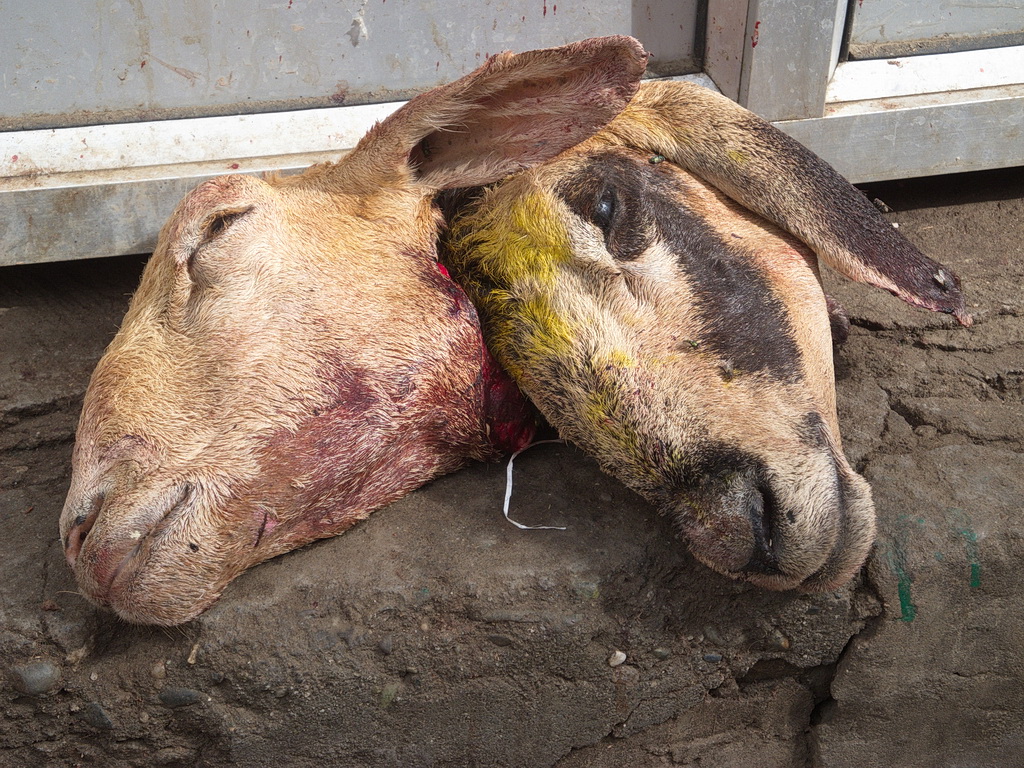
After breakfast, we continue our journey west. The scenery is spectacular. Few tourists venture into this remote part of Ladakh.
Today's destination is Kargil. In Kargil the Buddhist part of Ladakh ends and we are now in the land of the Muslims. Bearded men and veiled women dominate the street scene. An exciting experience. A stroll through the streets of Kargil makes us feel that the cheerful ease of the Buddhists has given way to the rigor of the Islamic faith. Fortunately, a hotel has finally opened its doors in Kargil, where you can accommodate western tourists with a clear conscience.
Overnight at 2,700 NHN
15. Day: From Kargil nach Lamayuro / ca. 105 km

Right after breakfast we leave Kargil and are soon back in the land of the Buddhists. Today we go to Lamayuro. Here we find one of the oldest monasteries in Ladakh. The complex is enthroned high on a rocky hill and from there you have an excellent view of the so-called "Moonland". Around the monastery, on the hill, the houses and huts where the inhabitants of Lamayuro live "stick".
Overnight at 3,520 NHN
16. Day: From Lamayuro to Alchi / ca. 55 km

Alchi is an ancient Buddhist monastery known for its beautiful murals. There is a very relaxed atmosphere in the small town. Those who wish can head to the nearby Rizong Monastery, which has the reputation of being one of the strictest monasteries in Ladakh.
Overnight at 3,130 NHN
17. Day: From Alchi over the Kardung-La to the Nubra Valley / ca. 185 km

We quickly cover the short distance to Leh. Then it's up high. Immediately behind Leh, the pass road rises to Kardung-La, the highest motorized pass in the world. With cloudless blue skies and bright sunshine, there is a magnificent view of Leh and the Stok mountain range. At Kardung-La we enjoy tea in the highest tea house in the world and continue our journey to Hunder in the Nubra Valley after the obligatory "passport photos".
Overnight at 3,180 NHN
18. Day: Hunder, Nubra Valley / ca. 100 km

Today is free for everyone to do as they please. There are a few options. Relax with a visit to the monastery of Diskit (approx. 30 km), camel riding in Hundur or along the Nubra river to the valley of flowers (approx. 100 km). The km information refers to the outward and return journey.
We meet again in Hunder for dinner.
Overnight at 3,180 NHN
19. Day: From Hunder to Pangong Lake / ca. 160 km

Recently, the route from Hunder directly to Pangong Lake has been open to traffic on a regular basis. There are only occasional road closures. So we won't take the detour via Leh as before, but drive directly to Spangmik.
We have to reckon with the fact that the road is in poor condition in parts and that we will also enjoy some water crossings, but the overwhelming landscape and the extreme experience make up for all the inconveniences.
Overnight at 4,200 NHN
20. Day: From Pangong-Lake to Leh / ca. 160 km

On the return journey to Leh we have one last pass to cross, the Chang-La, at 17,688 feet (5,391 meters) one of the highest passes in Ladakh. The road conditions around the pass are bad. One last challenge and one last great pleasure.
Then we stop at some monasteries along the way. The program includes a visit to the two most famous Buddhist monasteries in Thikse and Hemis as well as a visit to the former royal palace in Stok. Back in Leh we'll probably just want to stretch our legs.
Overnight stay at approx. 3,500 NHN
21. Day: Leh

Before we start our return journey to Delhi, we spend a relaxing day in Leh. I'll admit this trip is tough, so a day's rest before the long flight home comes in handy.
If you still have enough energy, you can go shopping or, a tip for the really tough, climb up to the palace and monastery. It looks more strenuous than it is and is rewarded with a great view of the city.
22. Day: Flight to Delhi
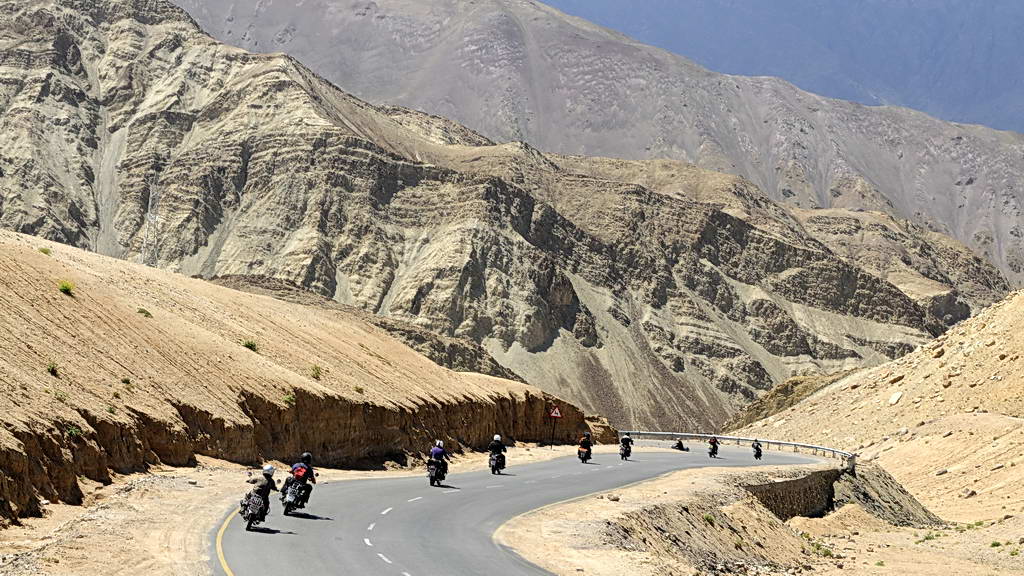
Early in the morning we fly back to Delhi. Here we have a few hours to visit some highlights. A dinner together concludes our Spiti-Ladakh-Cruise.
For Taj Mahal visitors
All those who have booked to visit the Taj Mahal after the tour will be picked up directly at the airport and driven to Agra
23. Day: Flight home or visit the Taj Mahal

The adventure comes to an end. Sometime in the night to today or during the day your plane takes off home. Until then there is still a room available (check-out around 10:00 a.m.) in the hotel in Delhi
For Taj Mahal visitors
Early in the morning, before sunrise, we head to the Taj Mahal and admire this amazing marvel of Muslim architecture. Afterwards breakfast at the hotel and we drive back to Delhi.
23. Day: Flight Home

Now the adventure comes to an end for the visitors of the Taj Mahal too. At some point during the night or during the day, your plane home will take off. Until then, there is still a room available in the hotel in Delhi (check-out 10:00 a.m.).
We look forward to welcoming you soon on one of our other trips to "Incredible India", perhaps in the desert state of Rajasthan or tropical Kerala.










